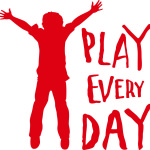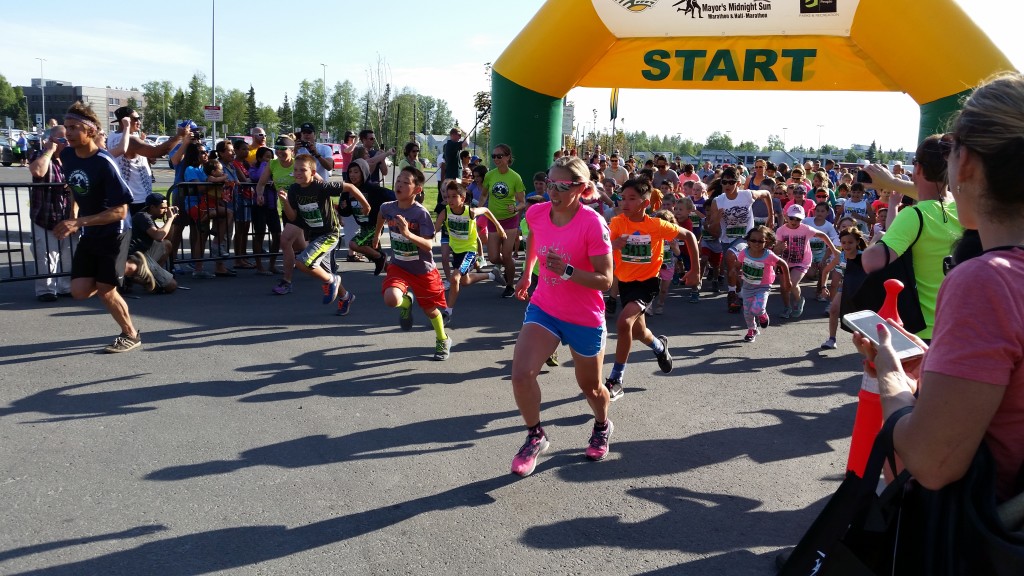Impact
EMPOWERING ALASKA’S YOUTH TO BUILD THE HABIT OF DAILY PHYSICAL ACTIVITY
Increasing physical activity is an effective strategy to reduce childhood obesity and lower the risk of developing chronic disease such as heart disease, high blood pressure and diabetes.1 Regular physical activity also lowers the risk of multiple cancers. According to a World Health Organization study, obesity increases the risk for at least 13 types of cancer and now exceeds smoking as number one environmental factor contributing to cancer.2 Research also shows children who are regularly physically active tend to perform better academically and socially, and enjoy a better quality of life.
Healthy Futures, the signature program of the Alaska Sports Hall of Fame, works with over 20,000 youth from over 200 schools and supports more than 115 Events around the state that promote physical activity for children and adolescents. Click here to see a map of communities around the state participating in the Challenge.
The Healthy Futures Challenge is designed around the Centers for Disease Control recommendations that children get 60 minutes a day of physical activity in order to reap the benefits listed above.3 It has been shown that incentivizing children is an effective method of modifying their long-term behavior patterns, so the Challenge rewards children who record at least 15 days of 60 minutes of activity in a month with a small prize.4
While there has been success in decreasing the prevalence of childhood obesity in the Anchorage and Mat-Su regions5, progress has stalled. The rate of childhood obesity in these regions has stabilized and remains high; 17% of students are obese.6 Year after year, Healthy Futures and other like-minded organizations must continue working to decrease Alaska’s obesity problem.
Click here to see program data.
PHYSICAL ACTIVITY IMPACTS MORE THAN JUST HEALTH
Physical activity has been shown to benefit children in many ways—physically, academically, and behaviorally.
- Children are 20% more likely to earn an A in math or English when they have the chance to be active.7
- Students’ test scores jumped 6% in just three years after physical activity was incorporated into their school day.8
- Starting the school day with 10-20 minutes of teacher-led physical activity has been shown to decrease student discipline referrals by as much as 57% and decrease school nurse visits by 67%.9
- Children lower their insulin levels by 33% when they break up three hours of sedentary time with short, moderate intensity walking.10
PARTNERSHIP WITH THE STATE OF ALASKA CRITICAL TO INCREASING PHYSICAL ACTIVITY
The Department of Health and Social Services Play Every Day campaign partnered with Healthy Futures to increase youth physical activity because the Centers for Disease Control and Prevention found strong evidence that community-wide campaigns motivate people to increase their physical activity.11
Community-wide campaigns like Play Every Day have two main ingredients: a public education component and a boots-on-the-ground component to reinforce the education. Play Every Day provides financial support for Healthy Futures to provide the boots-on-the-ground through its free physical activity challenge. The campaign and Healthy Futures programs depend on each other for success.
Play Every Day also provides communication and promotional support that has helped enable Healthy Futures to reach five times more schools and 17,000 more Alaska children than it did four years ago. That support includes organizing school-based assemblies to motivate Alaska children to participate in the challenge; working with the state education department and school districts to increase school participation across Alaska; developing and distributing resources for school staff; creating, publishing and airing messages that promote the challenge and daily physical activity through multiple media statewide; and evaluating the challenge.
“I have learned how to log my exercise and in the end the prizes are cool but having a healthy body is even cooler” – student
“Many of the students do not even care about the incentives; they’re getting to the point where they are genuinely enjoying all the health benefits they are reaping.” – teacher
“Thank you for all the great work you do promoting healthy lifestyles. So proud to be part of your team!” – Healthy Futures spokesperson and Olympian Kikkan Randall
- US Department of Health and Human Services. 2008 Physical Activity Guidelines for Americans.
- Centers for Disease Control and Prevention. How much physical activity do children need? https://www.cdc.gov/physicalactivity/basics/children/index.htm. Accessed 4-21-2017.
- World Cancer Report 2014. Geneva, Switzerland: World Health Organization, International Agency for Research on Cancer, WHO Press, 2015.
- Dubner, Stephen J. “Why you should bribe your kids.” Audio blog post. Freakonomics. 14 July 2014. Web. Accessed 21 April 2017.
- Alaska Department of Health and Social Services. Student Weight Status Report for the Anchorage Metropolitan Area 2013-2014 School Year; 2014 http://dhss.alaska.gov/dph/Chronic/Documents/Obesity/pubs/2013-14WeightStatus_ASDandMSBSD.pdf. Accessed 11-26-2014.
- Centers for Disease Control and Prevention. Strategies to Prevent Obesity and Other Chronic Diseases: The CDC Guide to Strategies to Increase Physical Activity in the Community. Atlanta: U.S. Department of Health and Human Services; 2011.
- Active Living Research. Active Kids Learn Better. Infographic. San Diego, CA: Active Living Research; 2015.
- Active Living Research. Active Kids Learn Better. Infographic. San Diego, CA: Active Living Research; 2015.
- Whitt-Glover M, Porter A, Yancey T. Do Short Physical Activity Breaks in Classrooms Work? Research Brief. San Diego, CA: Active Living Research; 2013.
- Eunice Kennedy Shriver National Institute of Child Health and Human Development. Short bouts of activity may offset lack of sustained exercise in kids. Washington, DC: National Institutes of Health; 2015.
- Centers for Disease Control and Prevention. Obesity K-7 Students – Anchorage, Alaska 2003-04 to 2010-2011 School Years. MMWR 2013;62(21):426-430.

